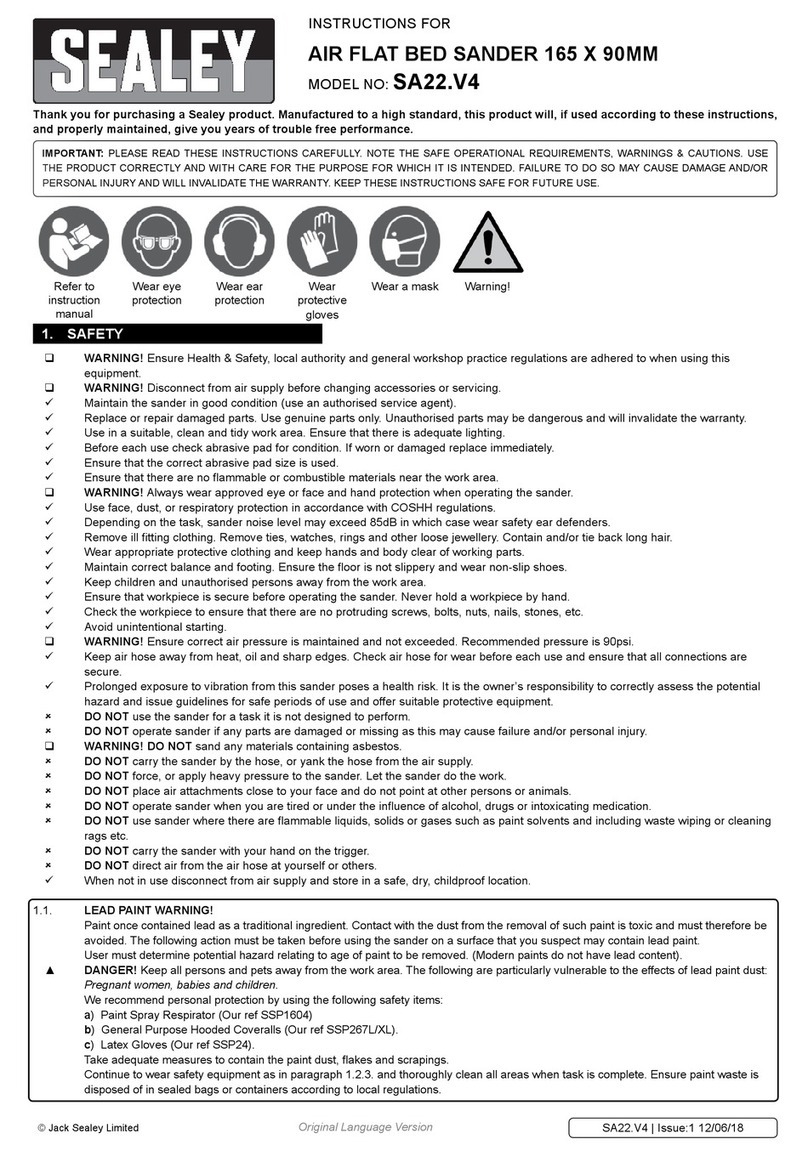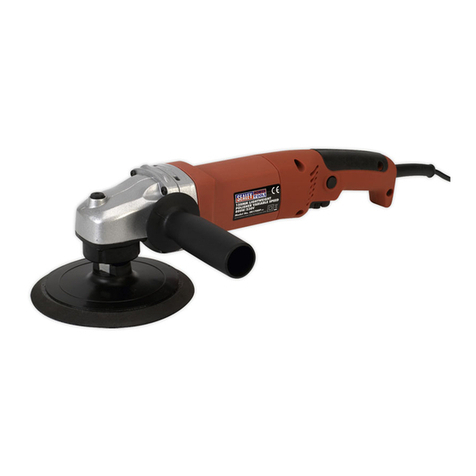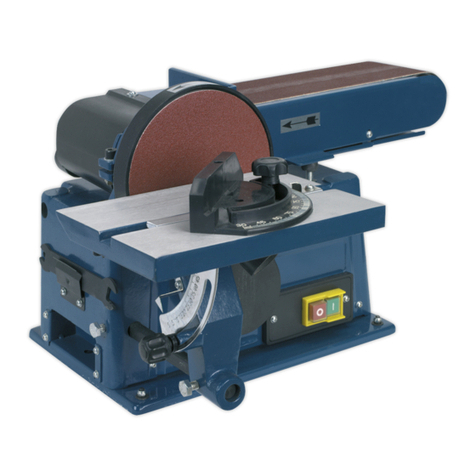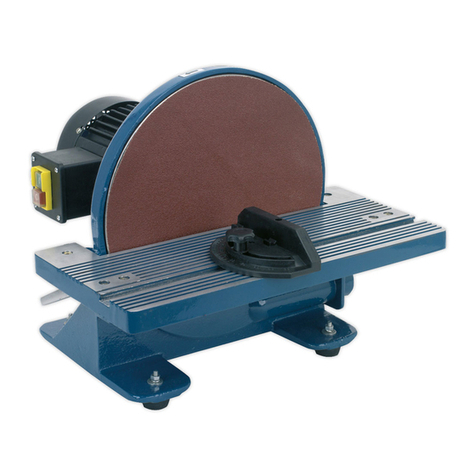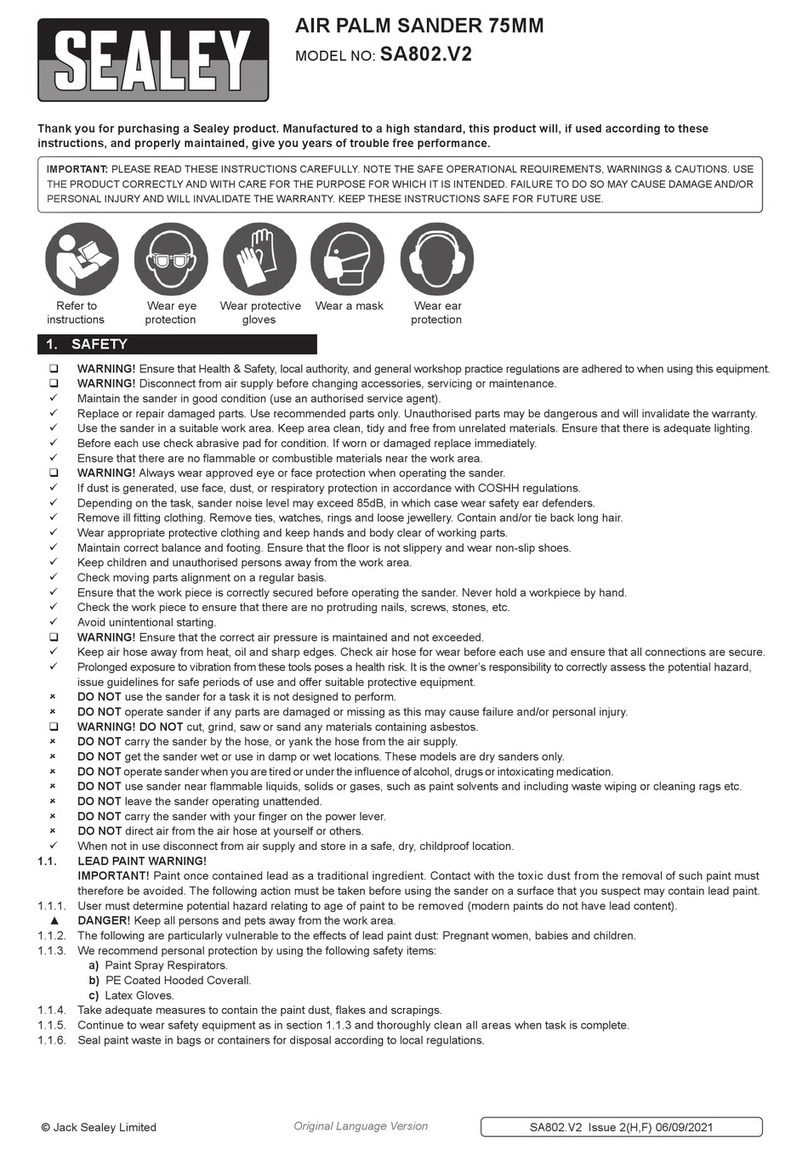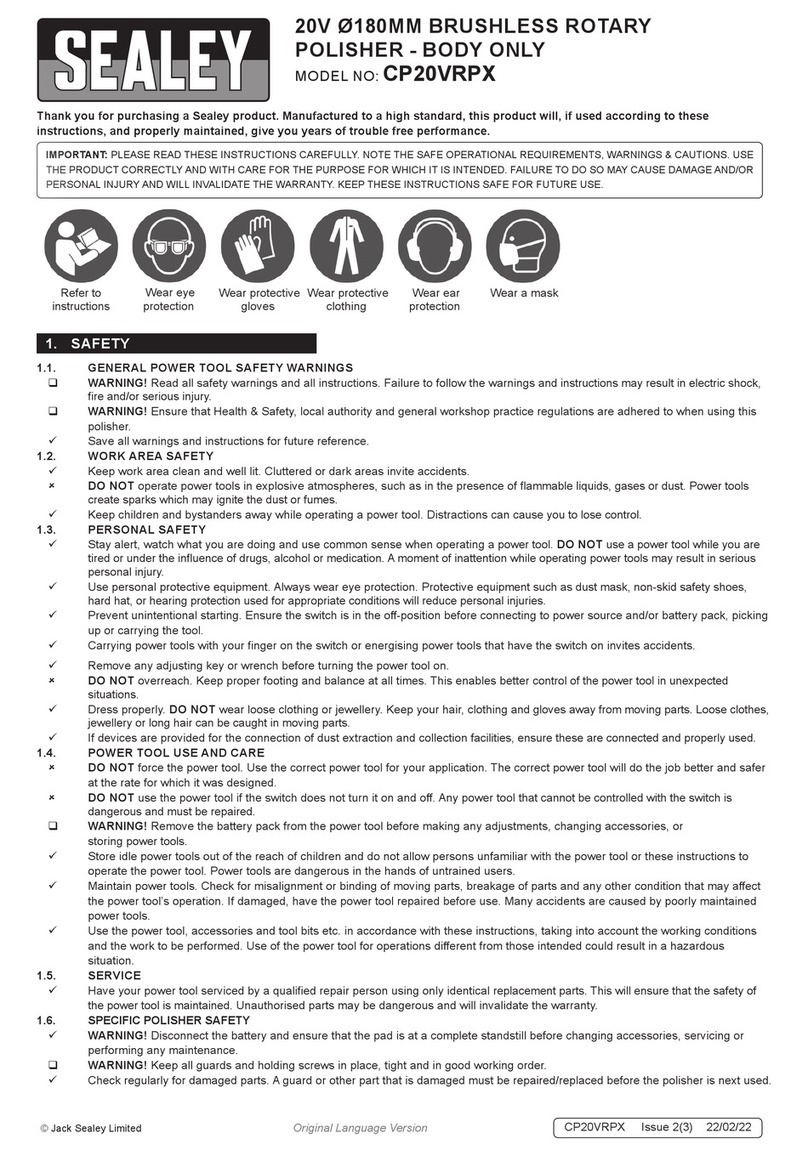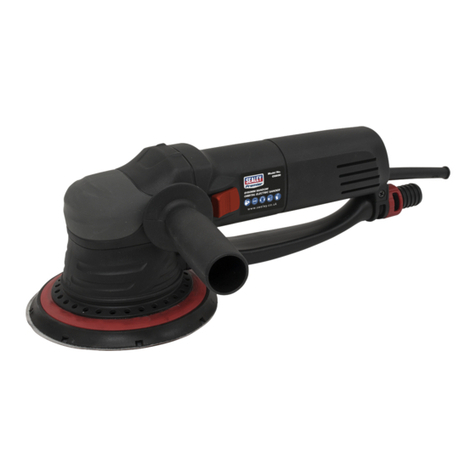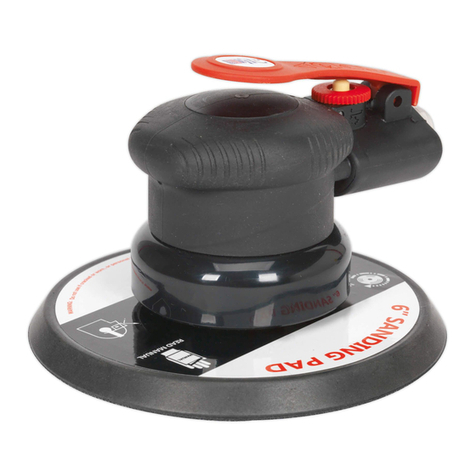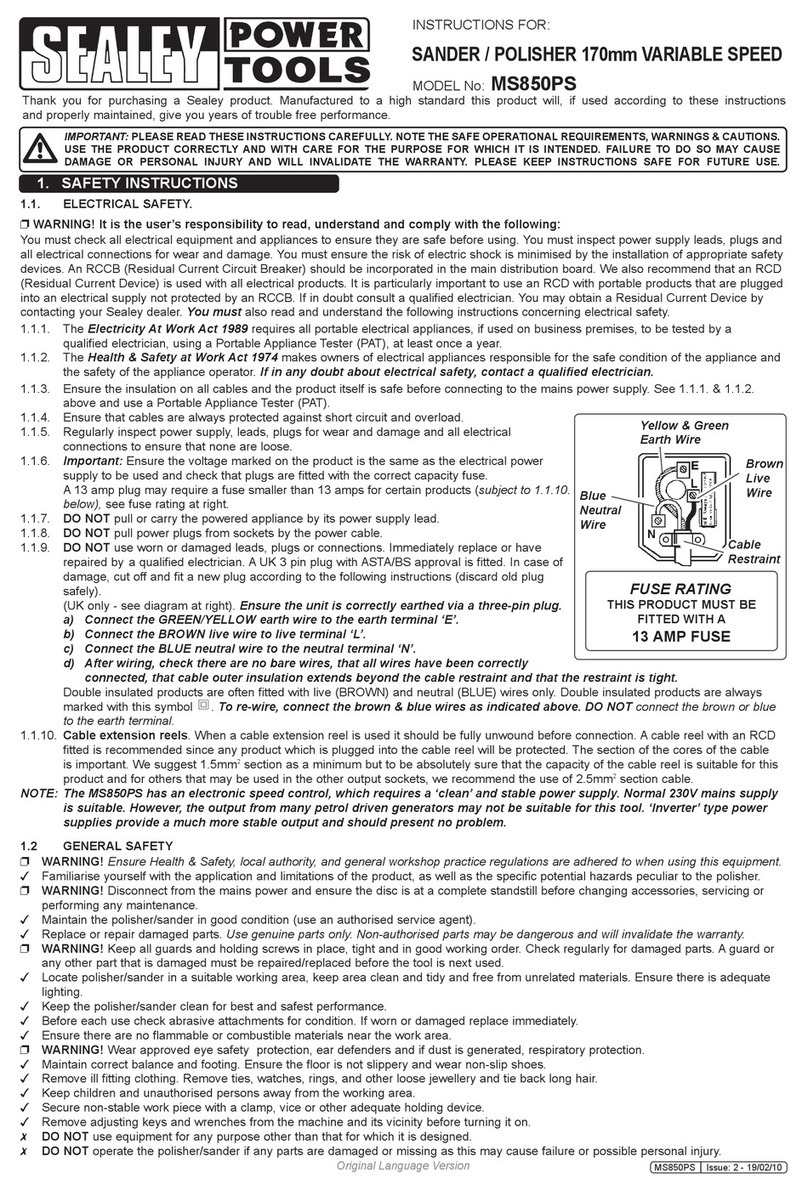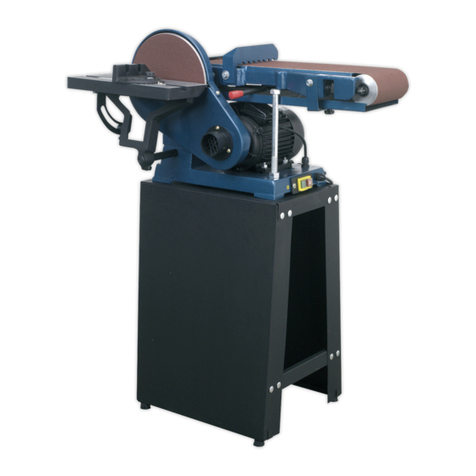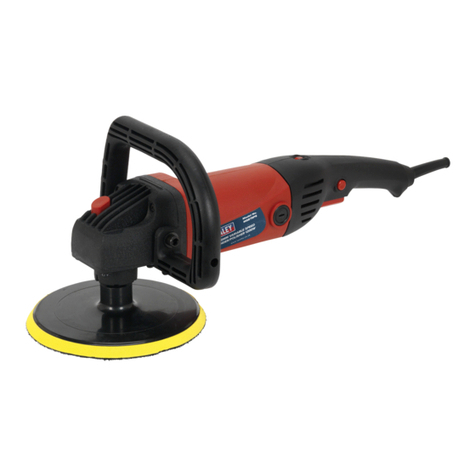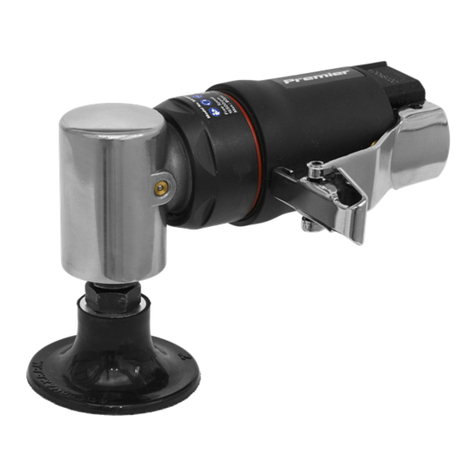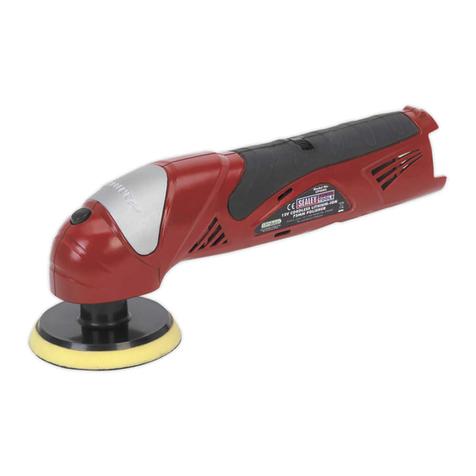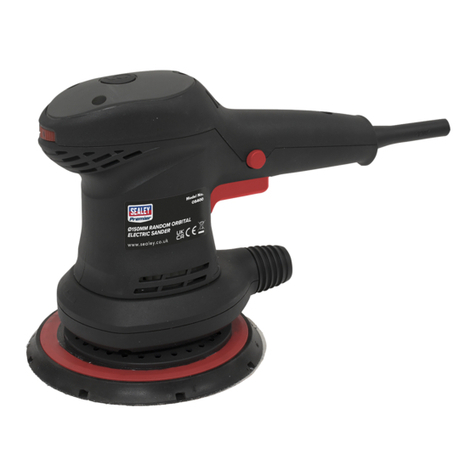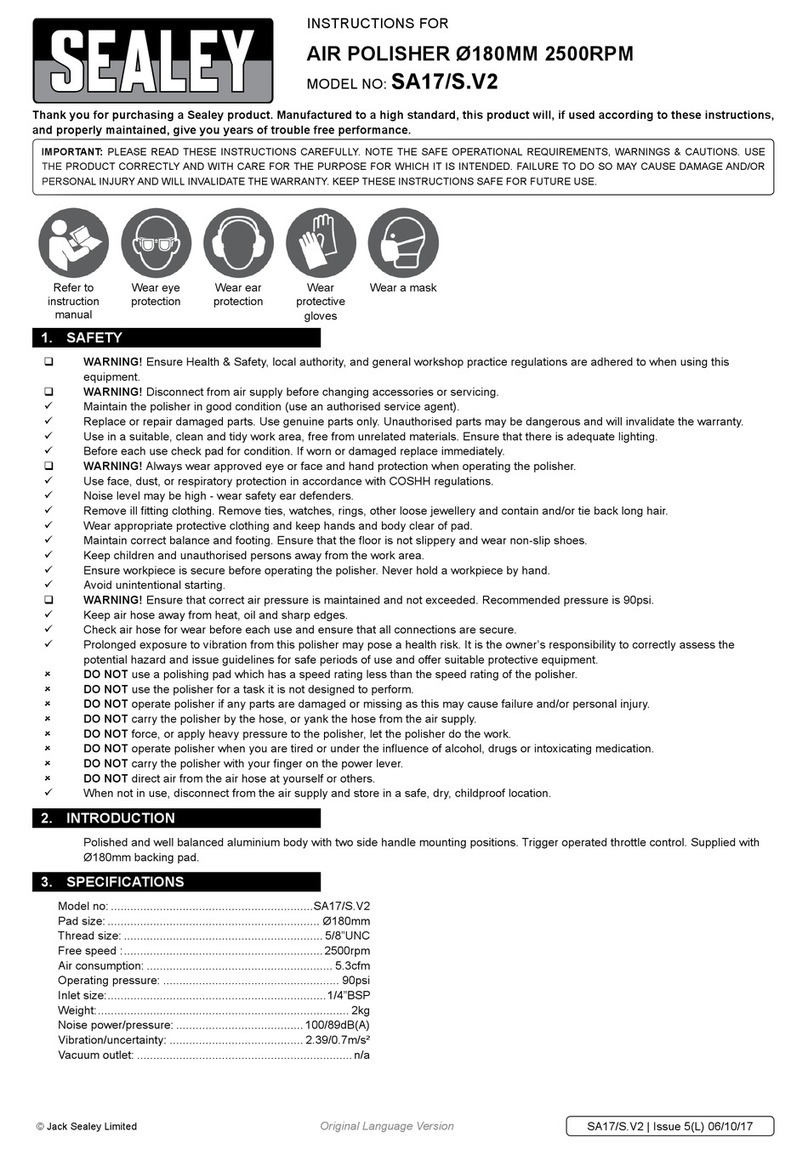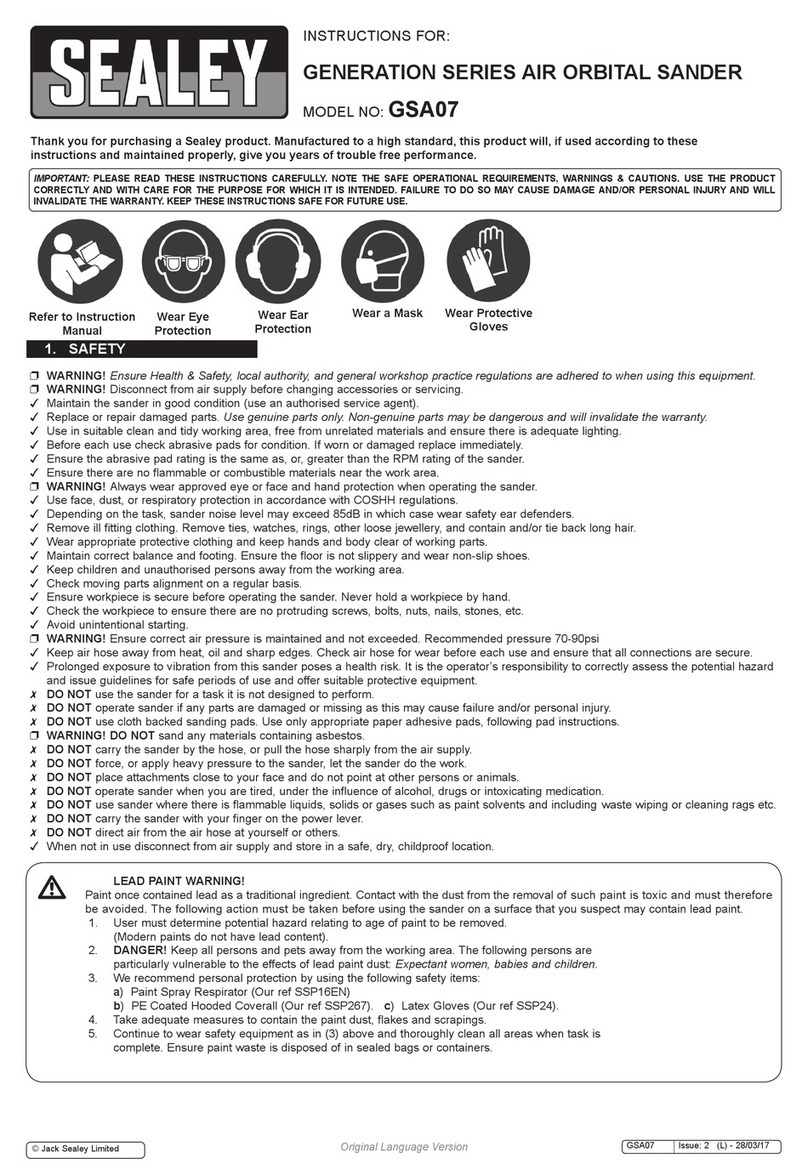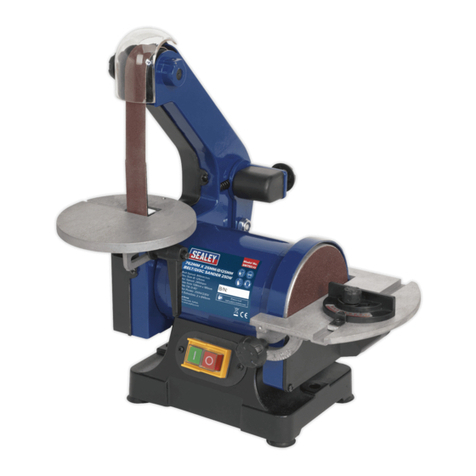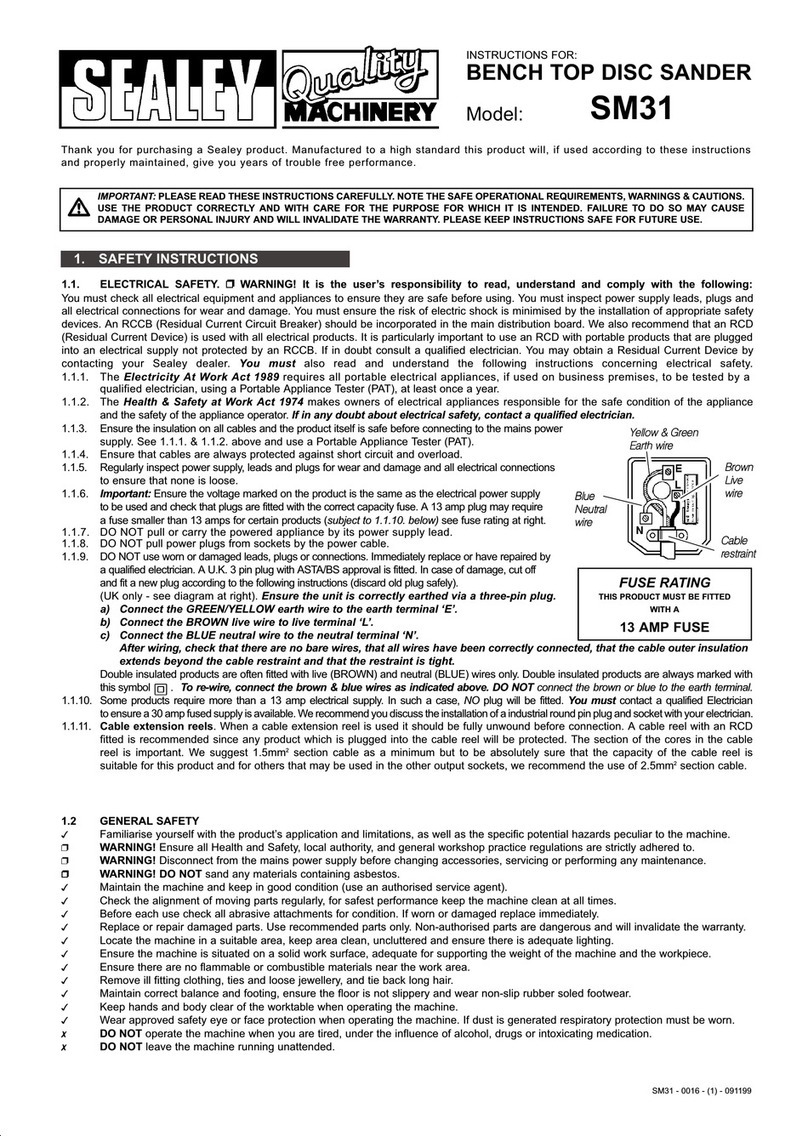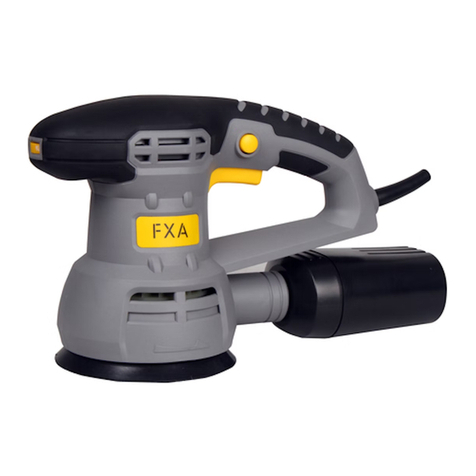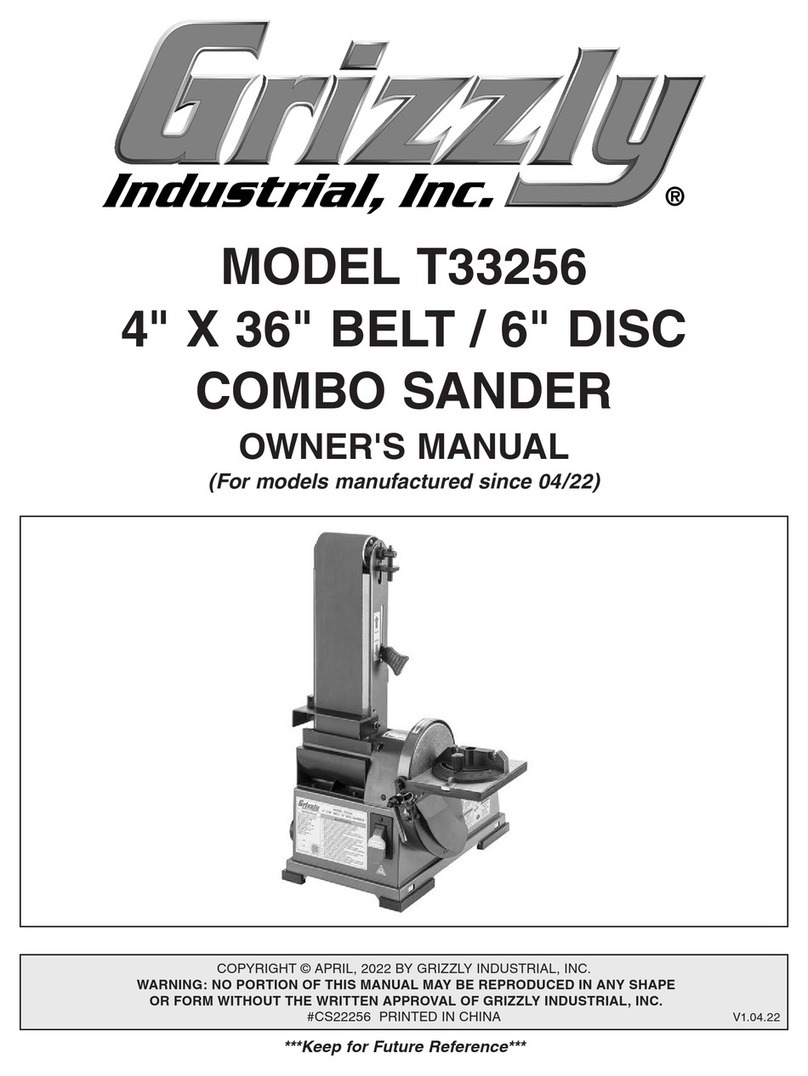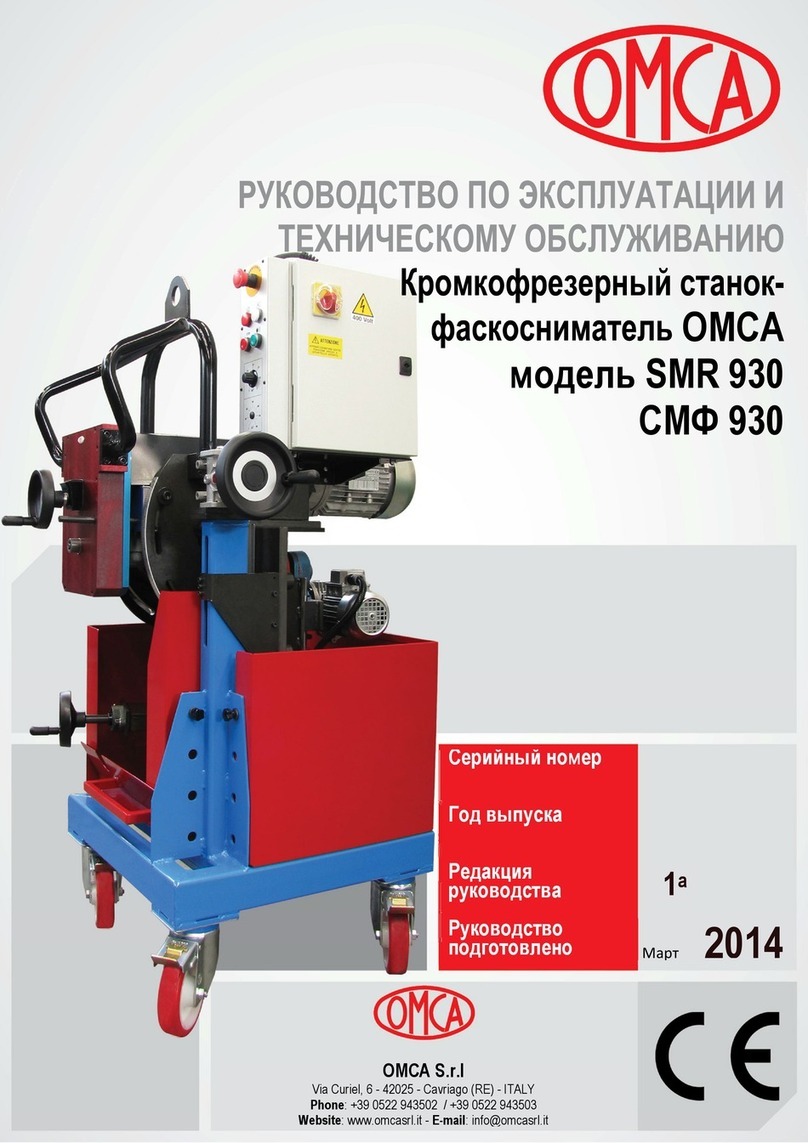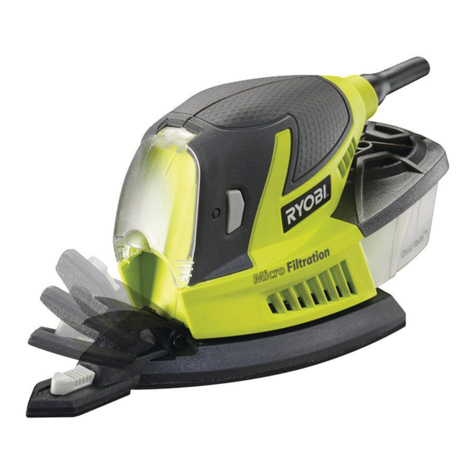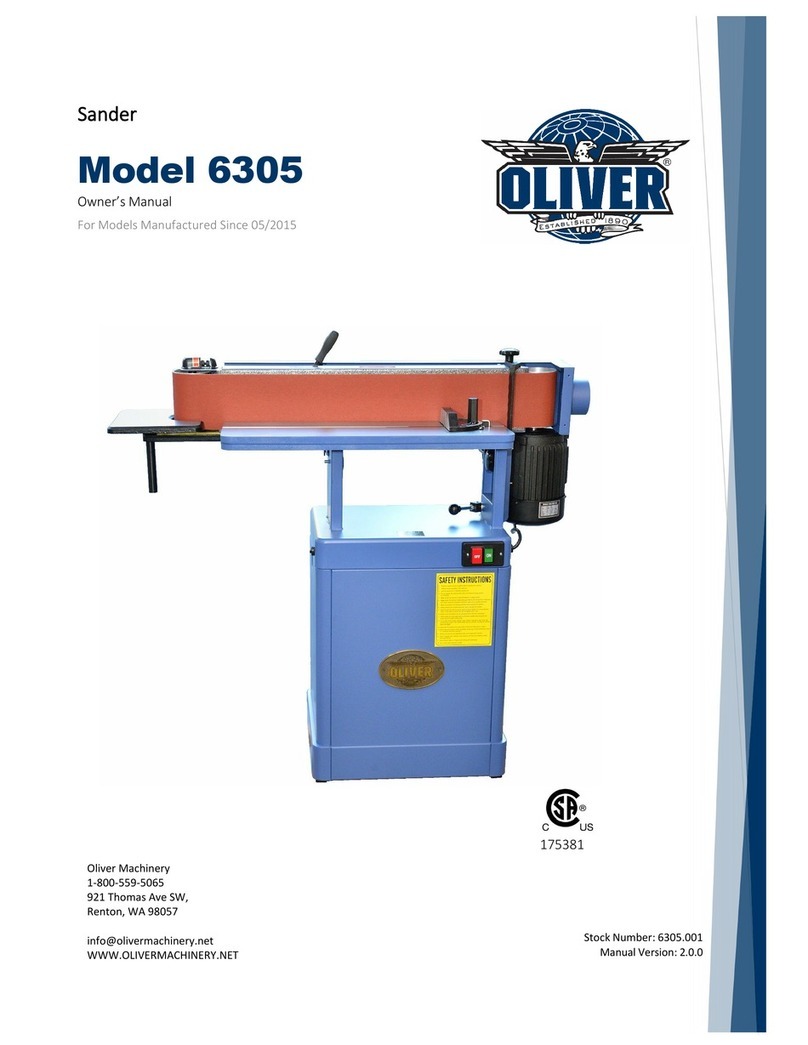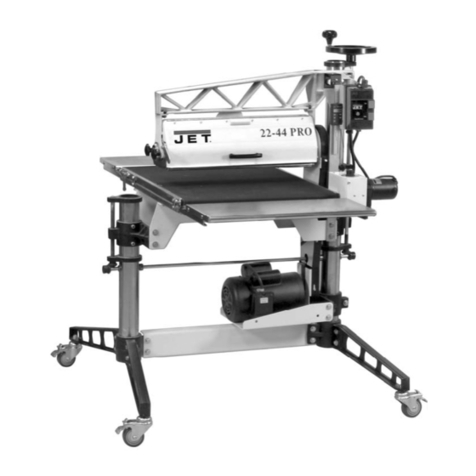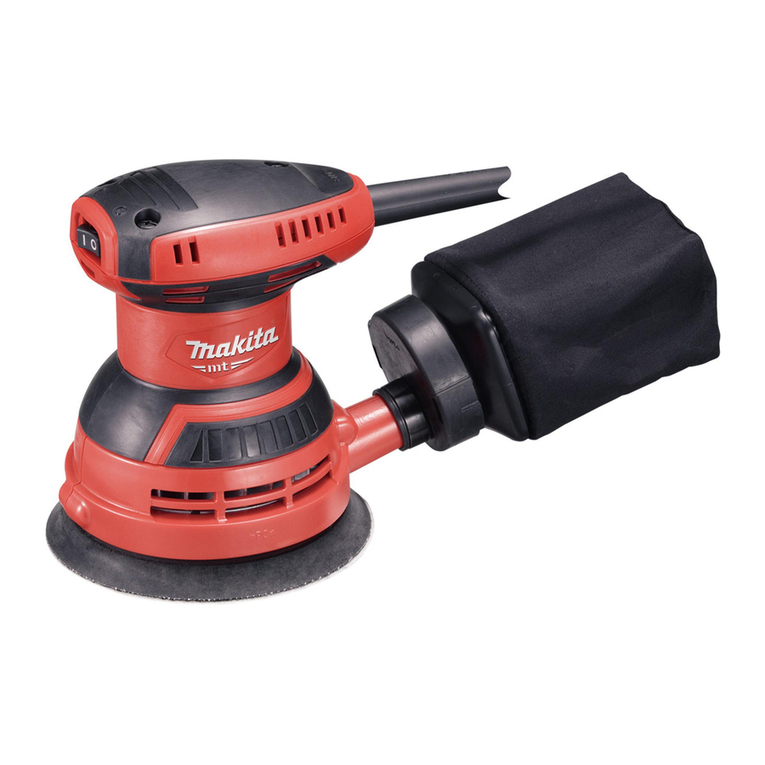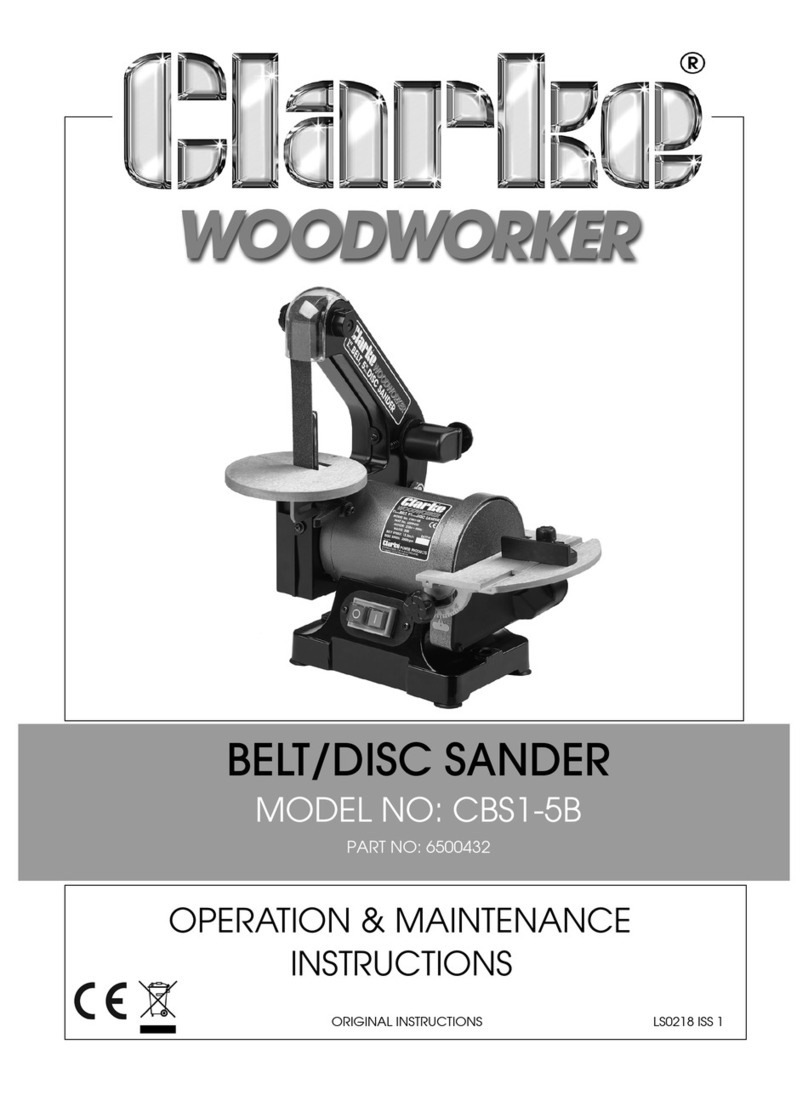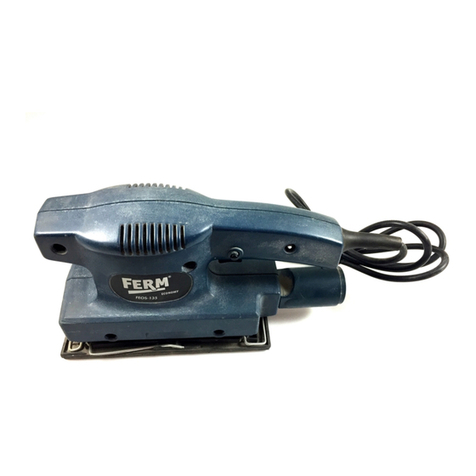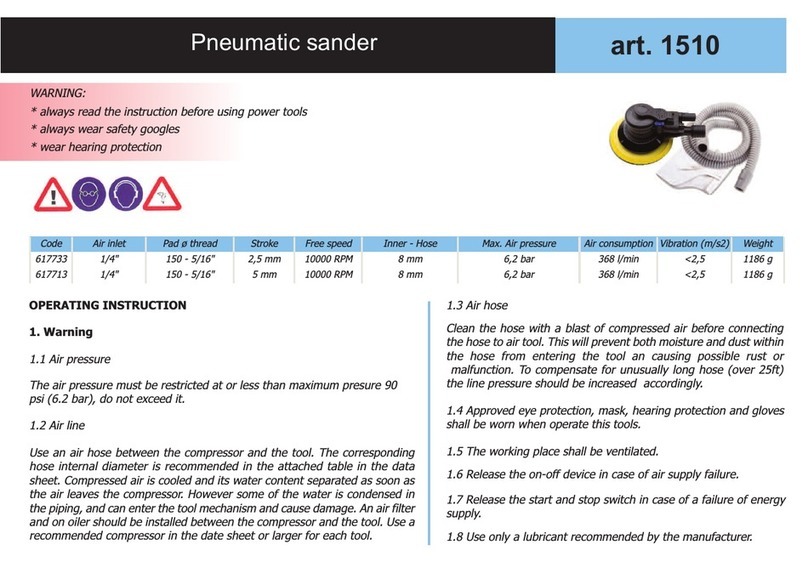
2. INTRODUCTION & SPECIFICATION
3.1. Air Supply
3.1.1. Ensure the sander air valve (or throttle) is in the "off" position before connecting to the air supply.
3.1.2. You will require an air pressure between 70-90psi, and an air flow of 8cfm.
3.1.3. pWARNING! Ensure that the air supply is clean and does not exceed 90 psi while operating the sander.
Too high an air pressure and/or unclean air will shorten the product life due to excessive wear, and may be
dangerous, causing damage and/or personal injury.
3.1.4. Drain the air tank daily. Water in the air line will damage the sander and will invalidate your warranty.
3.1.5. Clean air inlet filter weekly. Recommended hook-up is shown in fig. 1.
3.1.6. Line pressure should be increased to compensate for unusually long air hoses (over 8 metres).
The minimum hose and fittings internal diameter should be 1/4 I.D.
3.1.7. Keep hoses away from heat, oil and sharp edges. Check hoses for wear and make certain that all
connections are secure.
3.2. Couplings
Vibration may cause failure if a quick connect coupling is connected directly to the air sander. To overcome this,
connect a leader hose to the sander. A quick connect coupling may then be used to connect the leader hose to
the air line recoil hose. See figs. 1 & 2.
pWARNING! Disconnect sander from air supply before changing accessories, servicing or performing
maintenance. Replace or repair damaged parts. Use genuine parts only. Unauthorised parts may be
dangerous and will invalidate the warranty.
5.1. If the air supply does not have an oiler, lubricate the sander daily with a few drops of good grade air tool
oil, such as Sealey ATO/500 or ATO/1000, dripped into the air inlet before use.
5.2. Clean the sander after use and change pad when required.
5.3. Loss of power or erratic action may be due to the following:
a) Excessive drain on the air line. Moisture or restriction in the air pipe. Incorrect size or type of hose
connectors. To remedy, check the air supply and follow instructions in Section 3.
b) Grit or gum deposits in the sander may also reduce performance. If your model has an air strainer
(located in the area of the air inlet), remove the strainer and clean it. Flush the sander out with gum
solvent oil or an equal mixture of SAE 10 oil and kerosene. Allow to dry before use.
If you continue to experience problems, contact your local Sealey service agent.
5.4. When not in use, disconnect from air supply, clean sander and store in a safe, dry, childproof location.
3. PREPARING SANDER FOR USE
4. ASSEMBLY & OPERATION
5. MAINTENANCE
6. DECLARATION OF CONFORMITY
1.2. LEAD PAINT WARNING!
Paint once contained lead as a traditional ingredient. Contact with the dust from the removal of such
paint is toxic and must therefore be avoided. The following action must be taken before using the
sander on a surface that you suspect may contain lead paint.
1. User must determine potential hazard relating to age of paint to be removed.
(Modern paints do not have lead content).
2. DANGER! Keep all persons and pets away from the work area. The following are particularly
vulnerable to the effects of lead paint dust: Pregnant women, babies and children.
3. We recommend personal protection by using the following safety items:
a) Paint Spray Respirator (Our ref SSP16EN)
b) PE Coated Hooded Coverall (Our ref SSP266). c) Latex Gloves (Our ref SSP24).
4. Take adequate measures to contain the paint dust, flakes and scrapings.
5. Continue to wear safety equipment as in (3) above and thoroughly clean all areas when task is
complete. Ensure paint waste is disposed of, in sealed bags or containers, according to local regulations.
p
p
p
WARNING! Ensure you read, understand and apply safety instructions before use.
4.1. Assembly
4.1.1. Lift front retaining spring arm and insert the sanding paper under the front of the spring.
Replace retaining arm and the paper will be held in place. Attach the rear of the paper in the same manner.
4.1.2. Connect air supply to sander, press the control valve lever and check that the sander is working correctly.
4.2. Operating
Always use sanding paper appropriate for the job. Work progressively from coarse grades to finer grades.
DO NOT go from coarse to fine in one step as it may be difficult to remove swirl marks left by the coarse grit.
DO NOT apply excessive pressure, let the sander do the work for you. Start the sander and bring it to the work
surface evenly and slowly. Move the sander back and forth in overlapping areas. Remove the sander from the
work surface before turning off. Regularly check the sanding paper for wear and always change if cracked or damaged.
DO NOT allow sander to run in idle for an extended period of time as this will shorten the life of the bearings.
fig. 1
Pad Size . . . . . . . . . . . . . .70x400mm
Stroke Length . . . . . . . . . . . . . .25mm
Free Speed . . . . . . . . . . . . . .2500spm
Operating Pressure . . . . . . . . . .90psi
Air Consumption . . . . . . . . . . . . .8cfm
Air Inlet . . . . . . . . . . . . . . . . .1/4BSP
Sound . . . . . . . . . . . . . . . . .98.0dB(A)
97.7dB(C)
Vibration Level . . . . . . . . . . . . . .4m/s2
Weight . . . . . . . . . . . . . . . . . . . . . .3kg
The SA32 has a twin piston configuration which powers the base plate on the forward and backward stroke. This
arrangement also reduces vibration for more comfortable operation.
We, the sole importer into the UK, declare that the product listed here is in conformity with the
following standards and directives. The construction file for this product is held by the
manufacturer and may be inspected, by a national authority, upon request to Jack Sealey Ltd.
For Jack Sealey Ltd. Sole importer into the UK
of Sealey Power Tools.
Air Operated Twin Piston In-Line Sander
Model: SA32
98/37/EC Machinery Directive
93/68/EEC Marking Directive
27th February 2002
Declaration of Conformity
Signed by Mark Sweetman
SA32 - 1 - 250202
fig. 2 01284 757500 E-mail: sales@sealey.co.uk
01284 703534
Sole UK Distributor, Sealey Group, Bury St. Edmunds, Suffolk.
